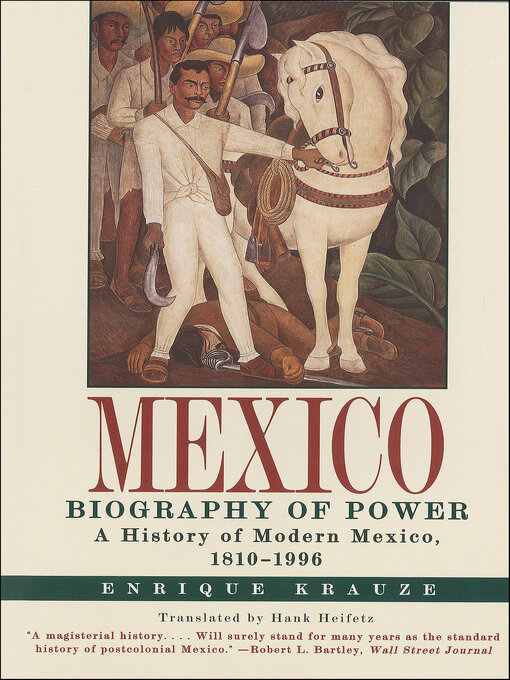The concentration of power in the caudillo (leader) is as much a formative element of Mexican culture and politics as the historical legacy of the Aztec emperors, Cortez, the Spanish Crown, the Mother Church and the mixing of the Spanish and Indian population into a mestizo culture. Krauze shows how history becomes biography during the century of caudillos from the insurgent priests in 1810 to Porfirio and the Revolution in 1910. The Revolutionary era, ending in 1940, was dominated by the lives of seven presidents — Madero, Zapata, Villa, Carranza, Obregon, Calles and Cardenas. Since 1940, the dominant power of the presidency has continued through years of boom and bust and crisis. A major question for the modern state, with today's president Zedillo, is whether that power can be decentralized, to end the cycles of history as biographies of power.
- Earth Day
- Cowboys and Country Music
- Literary Longlists
- Solar Eclipse
- Spring Cleaning
- The More People I Meet, the More I Love My Dog
- Life on Our Planet
- Celebrate the Freedom to Read!
- Washington State Authors
- Great Book Group Picks
- Always Available Classics
- Available now eBooks
- Just Added eBooks
- See all
- Celebrate the Freedom to Read
- Available now Audiobooks
- Just Added Audiobooks
- Award Winning Audiobooks 2024
- Poetry is Meant to Be Spoken
- Stuff You Missed in History Class
- Radio Dramas
- Hear the Dark Academia
- Listen While You Run: Audiobooks for Workouts
- Read by a Celeb
- Quick Stories
- All Audiobooks
- See all
- News & Politics
- Celebrity
- Health & Fitness
- Food & Wine
- Fashion
- Tech & Gaming
- Business & Finance
- Revistas
- Cars & Motorcycles
- Home & Garden
- See all


